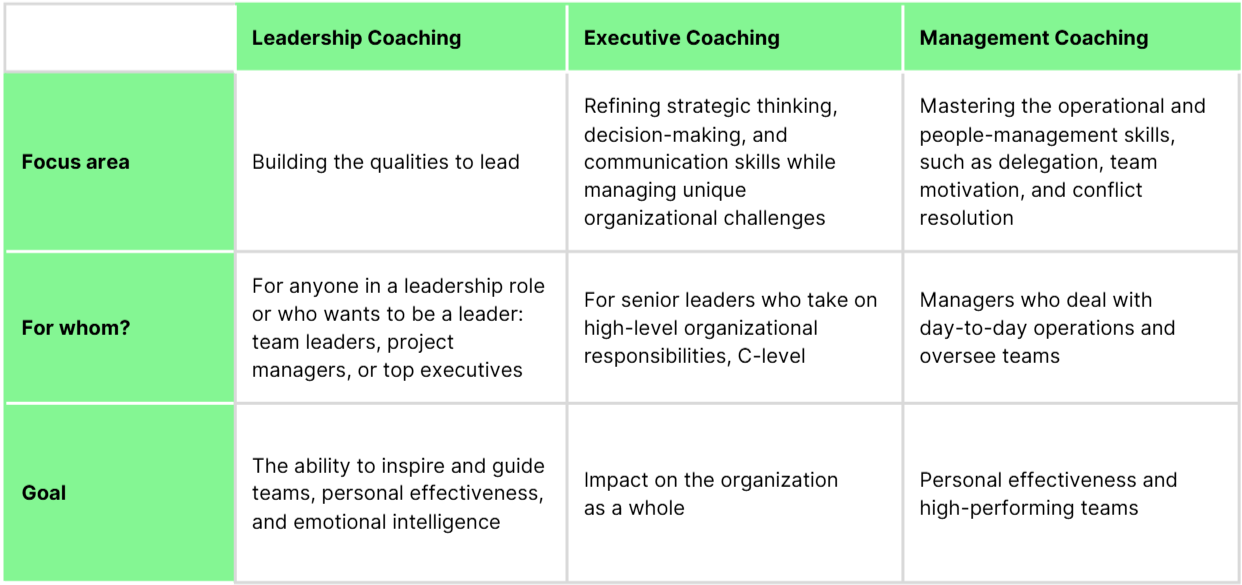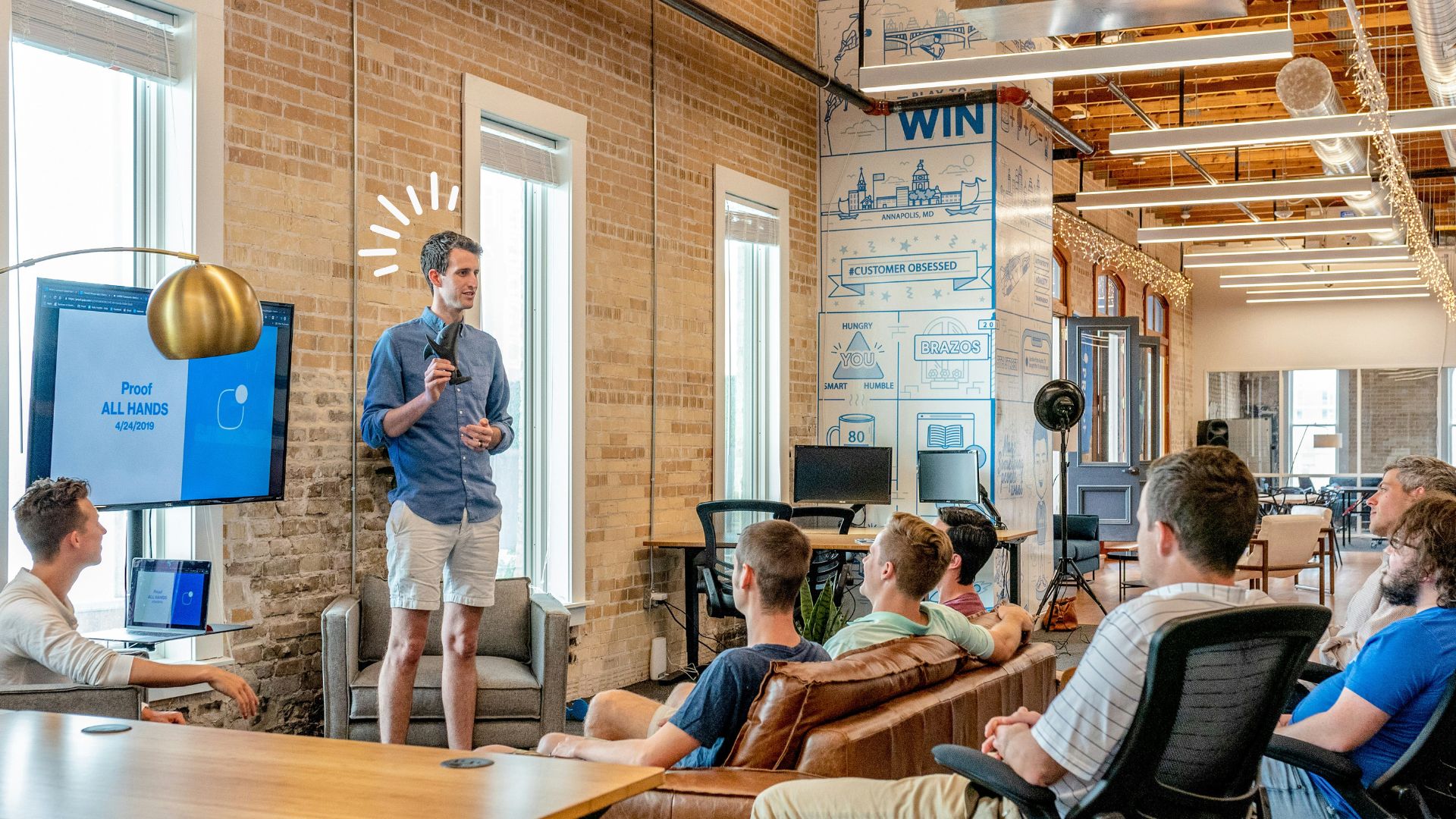Employee engagement is a company-wide effort. While HR leads the way, managers maintain a culture of engagement. Employee engagement strategies are the action steps or best practices that improve employee engagement. By applying those best practices, organizations can create a more motivated and connected workforce. Here’s how.
How do leaders affect engagement levels?
- Employees feel valued and motivated when led by competent and emotionally intelligent leaders.
- Transparent communication about company goals, expectations, and feedback crafts a culture of trust and inclusivity.
- Leaders who invest in their teams’ growth by offering training, mentorship, and coaching programs take employee commitment and retention to the next level.
Leadership, management, and HR: a shared responsibility
Leadership
Leaders set the tone and embody company values. Their actions shape the workplace environment. A leader who communicates openly and fosters growth builds teams that are dedicated and energized. Employees commit when they trust their leaders and see how their work contributes to the bigger picture. When leaders prioritize people—offering autonomy, development, and purpose—engagement follows naturally.
Management
Managers translate leadership vision into daily work experiences. They provide clarity, recognize effort, and support employee growth. When managers lack direction, give little feedback, or fail to offer support, motivation suffers. That’s why investing in manager training and well-being is critical. HR professionals are at the forefront of addressing these challenges, making sure managers have what they need to lead well.
HR
HR managers and directors fuel a culture of trust and recognition. They align individual and company goals, create growth opportunities, and promote well-being through policies that support work-life balance. They champion open communication, recognize performance, and ensure employees are in roles that match their strengths. Most importantly, HR empowers both leaders and managers through coaching and development, helping them build engaged and high-performing teams.

Strategies to improve employee engagement through leadership
- Match work to strengths and interests. Psychometric assessments, self-assessments, coaching, and performance data serve to align employees’ roles with their skills and needs.
- Give feedback and recognition. Harvard Business Review states that recognition programs increase engagement by 14%. Frequent feedback and recognition sustain motivation.
- Invest in growth. Deloitte research found that organizations with a strong learning culture see engagement and retention rates increase by 30% to 50%. A lack of career growth is a major driver of disengagement. Companies that integrate learning opportunities into daily operations and offer access to professional development resources outperform others. Mentorship also belongs to employee development approaches that prevent stagnation.
- Implement personalized coaching programs. Leadership coaching helps managers develop the skills needed to boost engagement. Through targeted career coaching, leaders can identify employees’ skill gaps, understand their challenges, and provide personalized guidance that matches their career goals.
- Support well-being initiatives and work-life balance. Flexible work and mental health resources reduce burnout.
- Connect work to purpose. Leaders should regularly communicate the company’s vision and align individual roles with broader organizational goals. People are more engaged when they see the impact of their work. A strong company mission and values give employees a sense of direction and meaning. Make these values a daily part of the workplace, ensuring employees understand how their contributions move the organization forward. Aligning employees with a company mission builds connection, guides decisions, and creates a shared purpose. When teams move toward the same goals with the same principles, unity follows.
- Build stronger team connections. Work is more than tasks and deadlines—it’s about people. Encourage team events, mentorship programs, or casual networking opportunities. Strong workplace relationships boost morale, encourage collaboration, and create a sense of belonging.
Why leadership coaching matters
Leadership development coaching is a hands-on process that helps leaders level up—fast. A coach works with a leader to sharpen decision-making, refine communication, and tackle real-world leadership challenges head-on. No generic advice, just tailored strategies to boost self-awareness and maximize impact for results-driven leadership throughout the team and organization.

“The key advantages of leadership coaching are:
- Enhanced decision-making and strategic thinking. Leaders gain clarity, confidence, and the ability to navigate complex business challenges effectively.
- Improved emotional intelligence and communication. Coaching fosters self-awareness, active listening, and conflict-resolution skills, which are crucial for strong leadership.
- Stronger leadership pipeline. Organizations that invest in coaching develop future-ready leaders who can take on greater responsibilities.
- Resilience and adaptability. Leaders become more agile in responding to change, fostering a culture of continuous improvement.”
How does leadership coaching impact employee engagement exactly?
Leadership coaching helps create psychologically safe workplaces where employees are more engaged and innovative.”
Jane Klymenko, a career expert at Amy with 10+ years of coaching experience and the main area of expertise in Work-Life Balance
Leadership coaching use cases: real-world examples
Case #1: Enhancing executive decision-making
- Challenge: A C-level executive struggled with decision paralysis and over-reliance on micromanagement.
- Solution: Through leadership coaching, they learned delegation techniques and adopted structured decision-making frameworks.
- Outcome: The executive developed trust in their team, which improved efficiency and reduced burnout.
Case #2: Navigating leadership burnout
- Challenge: A senior leader felt overwhelmed, leading to disengagement and declining performance.
- Solution: Leadership coaching helped identify stress triggers, establish boundaries, and implement self-care practices.
- Outcome: The leader regained motivation, improved team morale, and sustained high performance.
Case #3: Cultivating a growth mindset in a leadership team
- Challenge: A leadership team struggled with resistance to change and a fear of failure.
- Solution: Leadership coaching sessions focused on mindset shifts, encouraging experimentation and resilience.
- Outcome: The organization fostered a culture of innovation, leading to successful digital transformation.
How Amy supports leadership in enhancing employee engagement
Amy is a science-driven employee development platform designed to empower leaders with data-driven insights, self-assessments, and career coaching to enhance employee engagement. By identifying skill gaps, work challenges, and growth opportunities with Amy, leaders keep an engaged and high-performing workforce.
Key benefits of using Amy
- Personalized coaching programs tailored to organizational needs
- Seamless integration with existing performance and development systems
- Сoaches offering unbiased facilitation
- Analytics-driven insights to improve engagement strategies
Check out Amy to boost engagement while growing your leaders.















